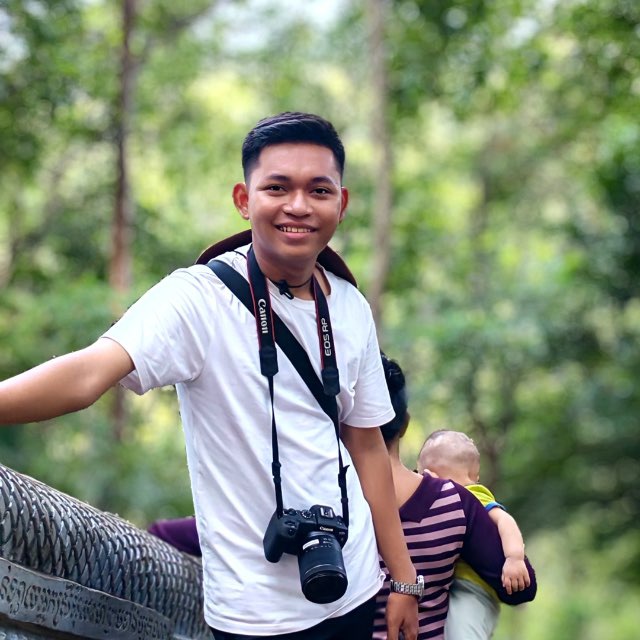CRDT 2025 Annual Staff Meeting and Retreat
- Mich Sophearith

- Oct 13
- 3 min read
Updated: Oct 16
The Cambodian Rural Development Team (CRDT) held its 2025 Annual Staff Meeting and Retreat, a week-long journey of learning, reflection, and connection. The team traveled to Battambang and Siem Reap, where staff explored inspiring examples of community development, livelihood improvement, sustainable farming techniques, and environmental protection. Throughout the retreat, CRDT staff gained valuable insights that will help strengthen future projects and deepen our impact in rural communities. Beyond learning, the retreat also provided a meaningful opportunity to reconnect as a team and reflect on the purpose behind our shared work at CRDT.
Battambang
In the first two days of our retreat, the CRDT team traveled to Battambang, Cambodia, where we combined exploration, learning, and reflection. Our first stop was Banan Temple, an ancient site at the top of a mountain, with a lot of steps. Next, we enjoyed a ride on the Banan Bamboo Train, which took us through scenic landscapes and eventually to a man-made garden. To end the day, we visited Phnom Sampeau’s Bat Cave, where millions of bats took flight beneath a stunning sunset — a truly unforgettable experience. Seeing these attractions brought reflection on how CRDT can think creatively to bring tourists to the communities we are working in.
On our second day, the team visited the Ta Sei Samaki Agricultural Cooperative (AC), where we were introduced to their innovative model farm. Ta Sei Samaki AC is a local initiative excelling in community development, market strategy, and sustainable farming techniques. The dedication of the staff and community leaders to improving their community is truly inspiring. Here, our staff learned about the circular farming system, where each component supports and benefits the others, creating a sustainable and efficient model. We also gained insights into market-driven production, seasonal crop planning, community and business management, and model farm development—sparking ideas for how CRDT could apply similar approaches, such as developing our own model farm to teach sustainable farming practices. We also explored ways to integrate sustainable farming and agri-tourism into our target communities. Our time in Battambang was both inspiring and insightful, reminding us of the creativity and determination within Cambodia’s communities and how collaboration drives meaningful progress.
Siem Reap
The rest of the retreat took place in Siem Reap, where we continued to explore, learn, and reflect while visiting two inspiring community-based ecotourism (CBET) sites. Our first visit was to the Preah Dak Model Village, a community recognized for its strong sense of togetherness, environmental stewardship, and local pride. Through close collaboration between local authorities and community members, Preah Dak has become a leading example of sustainable tourism in the region. The community also demonstrates a well-organized waste management system, featuring monthly clean-up campaigns, household-based payment systems, and strong awareness of the environmental and economic benefits of proper waste management. CRDT staff met with local leaders to learn about their successful partnerships, marketing strategies, tourism operations, and waste management initiatives.
On our second day in Siem Reap, we visited Kampong Phluk, often called the “Floating City.” During the rainy season, this unique community becomes entirely water-based, with homes, schools, and daily life accessible only by boat. Despite these environmental challenges, residents, supported by local authorities, have built a thriving tourism and fishing industry by adapting to their surroundings. Women, in particular, have been empowered as paddleboat guides, offering visitors an authentic glimpse into the community’s way of life and natural environment. CRDT staff also had the opportunity to meet with local authorities and experience a boat tour firsthand, gaining valuable insights into tourism management, community collaboration, marketing strategies, and sustainable business and environmental practices.
Both communities shared three key factors: active participation in community initiatives, a heartfelt commitment to continuous improvement, and strong support from local authorities. Experiencing and learning from these communities inspired our team to think creatively and recognize the potential within our own communities, to build on local strengths and turn challenges into opportunities for sustainable tourism and improved livelihoods.
Conclusion
The 2025 Annual Staff Meeting and Retreat was not only a time for learning and exploration, but also a moment to reflect on CRDT’s mission and the collective impact of our work. From the innovative farming practices in Battambang to the thriving ecotourism models in Siem Reap, each experience reminded us that meaningful change begins with collaboration, creativity, and community empowerment. Looking to the future, CRDT hopes to bring about a new era where both the communities we work in and the businesses that we own thrive sustainably. As we return to our daily work, we carry with us new ideas, strengthened connections, and a renewed commitment to improving rural livelihoods and protecting Cambodia’s natural environment.











Comments